sTORYTELLINGOne expression of the creative flame is the art of storytelling.
If we imagine the organization as a group of adventurers having survived a recent and harrowing ordeal, the group might next settle into their encampment and position themselves around the fire. They can call on newly-created, shared memories in order to conjure stories, myths, fables, legends and metaphors that are endemic and unique to the tribe. These stories are then passed on from one person to the next, sometimes becoming more incredible. They are even passed onto future generations. (Most of us have heard that “back of the napkin” story of the company's founding – or landing that big investor – that gets more sensational with each telling.) The stories an organization tells are directly informed by the belief system they have about themselves, one another, and the world around them. They are stories about heroes and exemplars, villains and tragedies — mythic portraits of the organizational cosmos. These stories have the power to break or reinforce behavioral patterns that define an organization’s culture. In Building a Story Brand (2017), Donald Miller compares the journey of the end user (or customer) to the protagonist in Joseph Campbell’s famed “hero’s journey.” Most businesses consider themselves to be the hero, flying around and fulfilling everyone’s needs. Miller says, however, that the organization is best viewed as the mentor, guide, or oracle that appears to reveal a secret, share tools or insights, minimize risk, add value, and assist the hero in accomplishing their quest. What happens when one of these organizational stories (or myths) travels outside the castle walls or the confines of the memetic bubble? Life on the inside of an organization sometimes doesn’t make sense to someone with a different cosmology or set of values. So, the stories that organizations tell the outside world are coded transmissions that require translation (through spoken language, marketing messages, or cultural training/onboarding).
0 Comments
It’s been three years and one pandemic in the making. I am so proud to finally announce the release of this fully-illustrated, definitive resource on how to facilitate groups and design collaboration. It presents a holistic view of facilitation – based on Integral Theory – and includes an array of contributions from expert voices, including co-author Geoffrey Nelson, David Sibbet, Lauren Green, Brian Tarallo, Jim Kalbach, Mark Tippin, Natalie Nixon, akasha, and Michelle Royal. If you (or your team) want to get better at guiding conversations, making decisions, surfacing opportunities, or driving outcomes, you must grab a copy today. They even come in hardcover! Inside you'll find:
Here’s What People are Saying About the Book“Whether you're a seasoned veteran or brand new to facilitating meetings and group processes, Facilitation is required reading. Everything in it is essential to the design and delivery of facilitation. And yet somehow in all 272 pages, nothing is superfluous. I tried to highlight everything that every facilitator should know; it would have been faster to have dipped the entire book in yellow ink.”
- Brian Tarallo, Lizard Brain, author of Surviving the Horror of Online Meetings: How to Facilitate Good Virtual Meetings & Manage Meeting Monsters “Facilitation is packed with essential knowledge and practical tips. This book is the perfect tool for group facilitators looking to feel more confident and capable in today's complex world. It’s an exciting and hopeful guide that delves into the underlying dynamics of group collaboration and places human experience at the center of the process.” - Rebecca Ejo Colwell, MBA; Founder Ten Directions, Co-Founder Integral Facilitator® by Rachel Blasco
From updating your strategy to scaling your team, growth is change and change is hard. Visual Consultants are hired to “facilitate the organization to perceive, understand, and develop the organization’s business and human processes, in order for the client to improve the situation themselves, as they define it.” Visual Consultants work with clients to (quite literally) paint the picture their teams are trying to describe in vivid details that is clear and easy to understand. In other words, visual consultants are the map makers and cartographers for our ideas in order to define and put plans into actionable stories. Visual consulting is at its essence, storytelling. The practice developed out of the constant need for innovation in businesses that want to remain not only at the top of their game, but to continue to move the ball forward in their field. Visual consultants are at the intersection of three fields that have given rise to a new way of working: Visualization, dialogic practice, and change consulting. The outcome is both rewarding and inspiring to executives and teams alike. Visual storytellers and consultants both design and lead change in organizations and communities that may otherwise feel unmotivated or simply unclear on what the objectives and expected outcomes of the group may be. Ultimately, this is an orientation in process thinking and process leadership. So, clients seeking alignment on new visions, process transformation, innovation, culture change, and sustainable results get the results they are looking for in hiring a visual consultant to bring order to the chaos. Why Seeing is Believing In both high profile corporate coaching and small personal development circles, creating a clear picture around your goals and steps to get there is a central topic. Look at the vocal facilitators and consultants as pros at this. Navigating both verbal story and visual landscape, these experts bring design thinking and creativity to the gray landscapes of corporate agendas and enhance team enthusiasm and commitment. An article in Forbes, Neuroscience Explains Why You Need To Write Down Your Goals If You Actually Want To Achieve Them, discusses the research behind describing or picturing goals and the strong association with goal success; and, people who very vividly describe or picture their goals are anywhere from 1.2 to 1.4 times more likely to successfully accomplish what they set out to do. Think about visual facilitation and storytelling as the map to your destination. It’s much easier to get to where you are going if you have a better picture of what to expect or look for. It helps our monkey brains process more efficiently, and focus on what matters. If you are experiencing the following, you may need someone to consult with on your vision, culture, story or strategy. Some of the main complaints among brands and businesses that would benefit greatly from visual consultants are:
With all of this in mind, and especially if you are experiencing any of these issues, it makes sense to hire visual consultants to facilitate innovation workshops and improve overall team output and performance while defining what the next chapter of your business will look like. If you still don’t know where to start or what this might look like for your organization, we’d be happy to schedule a quick 30-minute call. Guest post by Ashley Preston
You only have six seconds to capture someone’s attention. It is a busy world out there and you’re competing against all of it. Information is constant in today’s day and age, and it is always coming at us. So how do you get people to look up and listen through all the noise? How do you get them to click on the link? How do you get them to care about what it is you’re saying? I spent a lot of time in newsrooms writing the promos and teases that kept viewers tuning in and clicking articles, and I can tell you there are a lot of ways to do it – with some ways proving to be more effective than others. These are the best techniques newsroom writers use to get you to look up, click the link, and see what they have to say. First Thing First The single most important thing you can do is create content that has value. None of these tips matter if you’re pumping out bullshit that has little to no value to your audience. If you don’t understand or care about what you’re writing about, there is a good chance your clients won’t either. Make sure what you’re writing about is worth the paper (digital or otherwise) it’s written on. Make sure you clearly understand what the objective of your information is, and how it helps your customers. Knowing the value you're providing makes it easier to show others why they should take time out of their busy days to consume your content. Sure, you can write bad content with interesting teases that get people to click or listen, but you can only do that so often before you lose credibility. Now that we’ve gotten that important disclaimer out of the way, here’s how you capture the attention of your readers or viewers with gusto. Imagine This Scenario Imagine a scenario where a family’s house burned down right before Christmas. The family got out safely after a daring escape through a second-floor window, but now they don’t have a home or any presents to give to their children for the holiday. The Red Cross is helping, and a local charity is collecting Christmas donations. The reporter covers the story – talking to the family about the fire, their escape, and the overwhelming sadness they feel when they think about Christmas morning. The reporter then talks to the organizations helping the family get back on their feet and have a good holiday. The goal of the reporter’s story is to let the community know that the family is devastated by their loss, feels lucky to be alive, and that the public can still help make the holiday a little brighter for them. There are several ways you could write headlines and teases for this type of story. 1. Call to Action People react when there is a way to positively respond to information that upsets them. In this instance, you would let the community know that they can do something to make this situation better. Oftentimes people feel helpless, especially in the face of bad news, so when people realize they can help, they will. A tease like this would focus on letting people know there are steps they can take to make things better for the family. Example: “A local family barely escapes a fire that destroys everything they own days before Christmas; how you can help make sure that their holiday is still a festive one.” 2. Important / Interesting Facts People love a good story, and we are drawn to shocking information. While it is always important to lead with the most relevant information, it is also a wonderful way to turn someone’s head. These are the facts that people will remember and make people care; use that to your advantage. A tease like this would likely focus on the family’s escape and the community outpouring that quickly came in. Example: “They barely escaped with their lives; a local family jumps from their second-story window to save themselves from a fire days before Christmas – what the community is now doing to help.” 3. Emotional Story This is, without question, the most powerful tease element you can include. Most people are caring and can relate to the pain of others. It’s why I can’t hear Sarah Machlachlan’s 1999 hit “Angel” without thinking about dogs in cages. It is why music stirs us like it does. We are moved by raw emotion. Emotional statements from people directly impacted by the situation stay with you. They help us empathize better with people. They encourage us to act. They help us better connect with ourselves and with others. If you can use an emotional tease, the general rule is do so, because you will usually see results. In this scenario, a professional writer would lead with a statement from the family, something talking about how both grateful they are to be alive, but sad that their children will have nothing, along with information that the community can still help. Example: “We are so grateful we made it out safely, but I still don’t know how we are going to tell the kids that Santa won’t be coming this year – what the community is doing to help a family who barely escaped a devastating house fire right before Christmas.” Ponder This When Writing Headlines and Teases All these techniques can be used together – a fact and the emotional toll it took on you, a fact with an action you can take, a brutal emotional plea and action you can take, etc. but make sure you factor in at least one of these elements. When writing out your headlines and teases, ask yourself:
If you’re looking for more help getting your content strategy in the right place, or improving your internal communication, let us know. We are a group of business coaches (with a background in media and journalism) who are here to help you clarify your ideas, articulate your message, and execute your mission. We would love to help you show the world that what you’re doing matters. Great leaders hire great coaches.
Over the last 7 years, I have had the honor and privilege to coach some of the most gifted, passionate and powerful business leaders — from other coaches to small business owners to Chief Innovation Officers. Coaches don’t need to understand their clients or the business, they need to believe in them. They need to see the utmost potential in their client and identify the growth and development opportunities for that executive to leverage. People hire coaches for a reason. Some of my clients were at a crossroads, overwhelmed by uncertainty while trying to navigate their business at the length of a flashlight beam in the darkness. Some of them were stuck — immobilized with fear and overwhelm because of financial pressure or because they were comparing themselves to others. Some were growing so fast that they were sickened by their own velocity. Some were bobbing in uncharted waters, depressed, isolated, and needing physical contact or someone to talk to. Some had found success and simply wanted to find ways to give back to their community or show up as a better leader. In every case, we talked about it. I asked questions. I noticed where topics were avoided, or where their body language shifted, or where they simply lacked the belief in their own power and agency. And then, I asked a different question. Each time, they came away with some kind of insight and commitment to change -- one massive action (or small, next, best step) that they could take toward growing their business or becoming the visionary leader that they were meant to be. Here are the top 8 areas in which I’ve seen clients move the needle, with sometimes game-changing breakthroughs. 1. SELF CARE An insight into self-care may be as simple as “I need to have more fun!” Other times, the client has realized “I need to take care of myself otherwise I can't help anyone else.” I’ve also heard clients say, “I’m the one creating all of this pressure on myself.” This is important because they have realized it is their own hand on the levers and gauges creating the tension and conflict within not only themselves but their relationships. One client, who had been quarantined during the pandemic, was so affected by the isolation that she couldn’t focus on her business at all. I could see in her downcast eyes and her buckled shoulders that she was sad. I could hear in her voice (esophageal constriction and vocal fry) that she was weak. By the end of the call we had identified a new, very specific, goal: “I am starved for touch so this week I will schedule a coffee with my friend and hug them for at least 20 seconds.” *Coaches are not therapists. We don’t look back at wounding, we look forward and focus on goals. If a client displays symptoms of depression it is our responsibility to refer them to (or encourage them to seek out) a clinical approach. 2. MINDSET Sometimes clients forget how amazing they are. They forget everything they’ve accomplished or only remember the last thing they did (the play before the timer ran out, the last speech of the campaign). Imposter syndrome can creep in and their mindset may move from a dynamic, growth state to rigid and fixed. By reminding clients how amazing they are, and inspiring them to affirm their attributes or accomplishments aloud (sometimes very loud), they can turn that mindset around. I’ve heard things like, “Wow! I’ve done some amazing things in my life and I need to remind myself what a badass I am.” One client, who doubted their worthiness, pushed back on her own negative self-talk saying, “No. I deserve to make good money. I want to share my business and my mission with the world. In order to make that happen, I need a bigger platform. So I need to keep suiting up and showing up.” 3. PERFECTIONISM / FEAR Resistance feeds on fear. Recovering perfectionists will tell you they deal with a chronic and crippling fear of failure and disappointing others -- that they simply cannot launch version 1.0 because it won’t be good enough. They may say they have “high standards” and that their superpowers lie in “planning” and “thinking things through.” The coaching goal is not to make the client smarter, but more effective. And that requires thinking and action. I like using the analogy of the sea and the stars. The sky represents perfection. We can gaze upon it from afar, appreciating the beauty of our sunsets or the splendor of the Milky Way. We can use the North Star to guide us and chart a clear course. The waters we’re on, however, are choppy -- tossing us back and forth, threatening to swallow us whole. The boat we’re sailing is constantly being rebuilt and repaired. Life (and your experience or interpretation of it) is imperfect. Don’t confuse the water with the stars. The best you can hear from a client is that “expecting perfection is unrealistic and unfair to myself and others.” 4. TIME MANAGEMENT / STRATEGY The brain is not designed to hold all of your appointments and deadlines. It is not intended to retain your annual strategic plan or your team’s objectives and key results. That's what mark-making and visual tools are for. Write that shit down. The most surprising and staggering observation from my years of coaching is the amount of business owners and executives who don’t have a handle on their schedule or their plan. Some are wasting time where they shouldn’t. (“If you’re saying yes to this, what are you saying no to?”) Some don’t use a calendar or they use too many. Some use a calendar for their business, but not for their family, leaving their spouse and children feeling stranded, angry, and confused. When we break the big thing into smaller things, I’ve heard clients say, “That doesn’t feel intimidating. My brain can handle it when it’s broken down into smaller chunks.” For small business owners, this is vitally important. I’ve heard them say things like “I need to create a visual sales pipeline to track my leads so that opportunities stop falling through the cracks.” When it comes to time management, I do a happy dance every time I hear a client say, “I will buy a planner and start writing down my commitments” or “I will look at my Google Calendar every morning so that I feel like I am more in control of my day.” 5. STORY It’s important that my clients know what story they’re telling. I do a lot of StoryBrand workshops, helping organizations put their client in the center of the story, elevating their customer as the hero, and showing up as their guide. We talk about the work of mythologist Joseph Campbell and novelist Kurt Vonnegut. We talk about The Hero’s Journey and the shapes of stories. When coaching clients consider the beginning and middle of their story from the outside, it’s sometimes easier to imagine where the ending should logically take them. I’ve heard clients have major insights such as, “Oh. I’m not the Hero at all. I’m the Oracle.” I’ve also heard them say, “I’m further along in my journey than I thought I was” and “All the ingredients of hope and change are in my story. I just need to get better at telling it.” One client decided to tap into her own history as a survivor of abuse in order to help others tell their story and grant them the power of choice. She said, “So many people feel like they don’t have a choice. If I can create choice for others in restricted spaces, there is unlimited potential.” 6. MARKETING / SALES From writing polarizing copy to creating compelling content, marketing is something I love helping my clients think about. I spent over ten years leading a marketing team in the media industry. Inbound marketing, advertising, and event activation/sponsorships are in my blood. One of my clients was struggling to build an annual content calendar and had brainstormed a bunch of ideas she thought were failures. She had been focused on generating one great tagline to describe a year-long program and had what she thought was a list of 10 garbage ideas. I asked her to read them to me. One after another she said the most amazing things that left me wanting to learn more. I didn’t hear a list of slogans or taglines, but a list of succinct, compelling topics. They were all the things she wanted her clients to learn. I told her that she was correct -- she had failed to write a tagline, but she had succeeded in writing 10 of the 12 monthly themes for her content calendar. She only needed two more. Her jaw dropped. “You’re right! These are great! Each one of these could be a monthly theme that includes a live video, a blog post, a newsletter, a guest interview on my podcast, you name it.” Another client admitted to “getting awkward” during the sales process -- usually right after telling her prospect the cost of her services. “I spend all this time building rapport, and then after I say the dollar amount, I get quiet and business-like and something changes,” she said. “I know they can feel it.” “Why on earth would you shift your approach halfway through a sales call,” I asked. “Is it because you switched from words to numbers?” “No,” she laughed. “Is it because you think you’re charging too much?” “No. In fact, I could probably raise my rates.” “Then what changed? What’s different at that moment,” I asked. “I’m scared,” she admitted. “For the first time in the conversation, I’m afraid they’ll say no.” After that, we found various ways for her to release the pressure and expectations she put on herself going into each sales call as well as to keep her energy consistent when talking about money. 7. GROWTH Some of my coaching clients have felt like they are “drowning” in the rising waters of change or queasy from the speed at which the business is scaling. Growth is change and change is hard. There are three types of change -- developmental (when things naturally grow, unfold or evolve), volitional (the boss has updated our sales goal, so we need a new strategy) and circumstantial (we couldn’t have predicted that the volcano would erupt, but it has, so now we run). When navigating growth, it’s important for most of my clients to know who or what is causing the change, and whenever possible, have agency or a sense of control over the direction. I’ve heard clients say “I need to reach outside my comfort zone” when skilling-up or moving from competence to excellence. I’ve heard them say, “I need to look outside my bubble” when hiring new team members. I’ve also heard them say, “I know this change is coming. There’s nothing I can do to stop it. And I can handle the growth!” 8. IDENTITY Mindset is important for confidence and self-image, but the client must also identify who or what they want to be. If you want to be a rockstar, but don’t see a charismatic leader when you look in the mirror, the audience will know you’re bluffing. They’ll smell it a mile away. If you want to be a successful business owner but think of yourself as someone who “isn’t that good with numbers,” your numbers will reflect it. You don’t have to be Mick Jagger or James Brown to be a successful bandleader and front-person. And you don’t have to be a mathematician to be a business owner. You only have to see yourself as who you imagine yourself becoming. This is what facilitates change in an individual, when the smoker commits to the vision of themself as someone who doesn’t smoke. This is what facilitates personal and professional development, when the administrative assistant commits to the vision of themself as the VP of Operations. They do the things and make the decisions that person would. They surround themselves with the kind of people that person would hang out with. This is important when developing vision and purpose in business. Knowing whether you are an accountant or a “fractional CFO to experts in the manufacturing industry” can make all the difference in the way you position yourself, talk about what you do, and connect with prospects. I’ve heard clients say, “I now know what kind of leader I am and it feels good.” One of my clients was a former therapist who had transitioned to a group coaching model. She was excited and intimidated by the Wild West of the unregulated coaching industry. She had spent years following guidelines; encouraging her patients to lick their wounds and talk about their worst times; avoiding giving direct advice, not making recommendations about helpful resources, books or podcasts; and not sharing or disclosing her own story. Now, as a coach, she was expected to do the opposite of all those things. Her inner therapist would raise its fearful voice and tell her it wasn’t right to do those things. It would say she wasn’t qualified and that she might cause harm to someone by giving them the wrong advice or by being too tough on them. She was in a real identity crisis. One day, she had enough. The desire to grow her limitless coaching business far outweighed the desire to battle with insurance companies over copay, and she said, “That’s it! I’ve got to tell my inner therapist to back off when she says I shouldn’t do those things. I’m a coach now.” If you’re interested in hiring an executive or business coach, sign up for the Amplified Executive Coaching program here. See you on our next call! Guest blog post by Geoffrey Nelson, M Ed. When I discovered Dungeons and Dragons (D&D) in the fifth grade, I fell hard in love. The funky box art, the spooky dice, the idea of a story lived and a world discovered through the power of pure imagination, all took me in and never let go. Through Dungeons and Dragons, people like me began creating outstanding virtual experiences for their friends long before Zoom, the internet, and even personal computers were part of daily life. Dungeons and Dragons was first published in 1974. It disrupted the toy and game space and became the best-selling toy of 1978, despite having no board, no pieces, and no winner. It also flew in the face of the emerging trend in video games. Pong had just arrived and it seemed that digital games tethered to TV sets were the future. D&D wasn’t about winning or losing or technology. It was about fellowship and story-making. It was VR before VR was cool. A shared virtual experience doesn’t live on a screen or a cloud server; it lives in the minds of the participants. They cast visions together with their super-power of conceptualizing the unknown and unseen. Their ability to collectively imagine creates unique interactive and problem-solving opportunities. Truly virtual experiences provide a sense of agency. When participants cannot affect change through meaningful choices, their experience is passive and vicarious, not virtual. Engagement, investment, and synthesis characterize optimal virtual experiences. In D&D, the participants’ choices shape their outcomes. The Dungeon Master (DM) describes the setting and situations, but the players decide the actions of their player characters (PC’s). What emerges is a memorable, enjoyable, virtual adventure. A good D&D session is a highly curated experience. The DM considers lighting, sound, and insists on the all-in presence of the players. Everything the DM does is intentional and aimed at immersing everyone deeply in the virtual world. Distractions must be minimized; table rules for players’ behavior are as important as the rules of the game. Cell phones in a basket, people! There’s no texting in the Fever Swamp. To be a good DM, you must be a rules expert, a compelling narrator, and a master of description. As the rules expert, you need to know how the game works: what the characters can reasonably do, what they absolutely cannot do, and how to determine the outcomes of their decisions. What makes D&D a game as opposed to a cooperative storytelling exercise is the welcome element of uncertain outcomes. Just as in facilitation, the DM knows the rules of the game but not how it will turn out. The more a DM invests in a particular outcome, the less meaningful players’ choices are. Without the skill and courage to manage agency and uncertainty, virtual experiences are boring at best and destructive or divisive at worst. To help the participants make the most of their agency, the DM must master skillful narration. Good DMs optimize the pace and momentum of the game through their narration of action, reaction, and consequences. Players lose focus and act silly or nihilistic when they are out of the spotlight for too long or the narration feels irrelevant. The DM solves this by keeping narrations short and vivid. Once a players’ turn is resolved, the DM focuses on the next player. Quick summaries, frequent reminders of critical information, and occasional over-cuing are tools DM’s use to keep the game moving forward. Just because the DM doesn’t know what the players will do, she must imagine what they might do. DMs should visualize various outcomes before the gaming session to anticipate what the players may need next. The RPG luminary Hankerin Ferinale creates binary nodes at critical decision points: if A, then B happens; if C, then D happens. Thinking ahead and planning for both success and failure won’t provide an exact answer for whatever the players choose. It will provide a set of options that combines and synthesizes with new information to create the next adventure node. Finally, the DM must master the art of succinct, evocative description. This isn’t action-focused narration or storytelling, which resolves a question. Resolving questions is for the players; The DM’s job is to evoke a shared story-space full of meaningful choices. The story emerges as the participants engage with these choices. With the focus on surfacing critical content, the DM must make situations as clear as possible: what are the stakes, what are the dangers, and what resources are available? By describing just the right details to bring the environment and situations to life, DMs enhance essential player agency. The quality of a D&D session can be measured by how vividly and fondly the players remember it. They will carry the experience with them, reminiscing about defeating the red dragon or the zombie invasion. They may make art or write stories about their adventures. Their real-life behavior may reflect something they’ve learned through play. These are responses to deeply engaging and impactful experiences. Learn the lessons of great DMs to shape your facilitation clients’ online experiences:
Follow these guidelines and your clients will be able to bravely and mindfully engage their challenges, and their virtual experience will be memorable and valuable. They will be heroes in a shared story and enjoy the riches of the highest outcomes.
When I use the customer journey mapping process to aid clients in their sales and marketing efforts (i.e. a framework like StoryBrand), we place their ideal client in the center of the story.
They are the hero and protagonist who has embarked on a quest to solve their problems (internal, external or philosophical). We identify a villain — someone or something that stands in their way and thwarts their progress at every turn. And, we are their guide (Yoda, Gandalf, The Scarecrow or Glinda the Good Witch). When they finally overcome this villain to claim ultimate victory and the gift of achievement, we have helped them up the mountaintop and filled them with the power and confidence to stand with one foot on the belly of the dragon and hold their sword to the sky. To move our potential customers from the safety and warmth of their hearth and up this treacherous mountainside, we may feel the need to shy away from such polarizing language when addressing them. We might think they need to be gently coaxed into a place of safety — lured into a cave and given the plan or solution in secret. In reality, our hero has been waiting for years for someone (a guide) to come along that has the courage to speak to her in such polarizing language — a language that draws a stark relief between what she’s afraid of and what’s truly at stake and what she stands to win. Identifying the villain — and what success will look like — allows us to plug simple, yet mythic and powerful words into formulas like the ones below that speak directly to the heart of our ideal client. The formulas are quite simple. Formula 1: Kill / Claim - This one uses the “k” sound to create an alliteration. The inputs should be short and use rhyming and/or rhythm to create a brief, memorable statement. Formula 2: Slay / Step Into - This one relies on the “s” sound and uses the mythic term “slay” in place of “kill.” Here are a few case studies, based on some of my past sessions: Example #1 A corporate innovation company that helps other businesses think ten steps ahead. They have identified as their villain the “Prime Movers” — those who are first to market. Their success looks like a prominent place in their chosen market segment. For them: Slay the competition. Step into your position. Example #2 A sales-based insurance company whose villain is the gray, shadowy, “big bad wolf” that threatens the safety of the community. Success looks like them being perceived as the trusted advisor, providing safety and shelter through the mitigation of risk. For them: Kill your monsters. Claim peace of mind. Example #3 A coaching program that encourages therapists to leave behind the clinical 1:1 practice model, become entrepreneurs and launch a group coaching business. The villain that terrorizes their (primarily female) protagonist is self-doubt and the fear of the unknown. Success looks like the fulfillment of a career they knew they were destined for. For them: Slay the unknown. Step into the light. Or, more boldly, and my favorite: Kill your fears. Claim your future. Copy like this is perfect for headlines in blog or social posts, webinar or workshop titles, or display ads. It serves to address their needs/pains and immediately begins to position you as the guide who is empathetic and demonstrates the authority to lead them on their quest. You can start today by using more bold, direct language with your potential customers. Watch how they react and respond. Measure how much faster they move up the mountain. And let me know the results. If you’re interested in what a StoryBrand or business coaching session can do for you, e-mail me at [email protected] to schedule a discovery call. |
Details
ABOUT THE AuthorJoran Slane Oppelt is an international speaker, author and consultant with certifications in coaching, storytelling, design thinking and virtual facilitation. Archives
March 2024
Categories
All
|

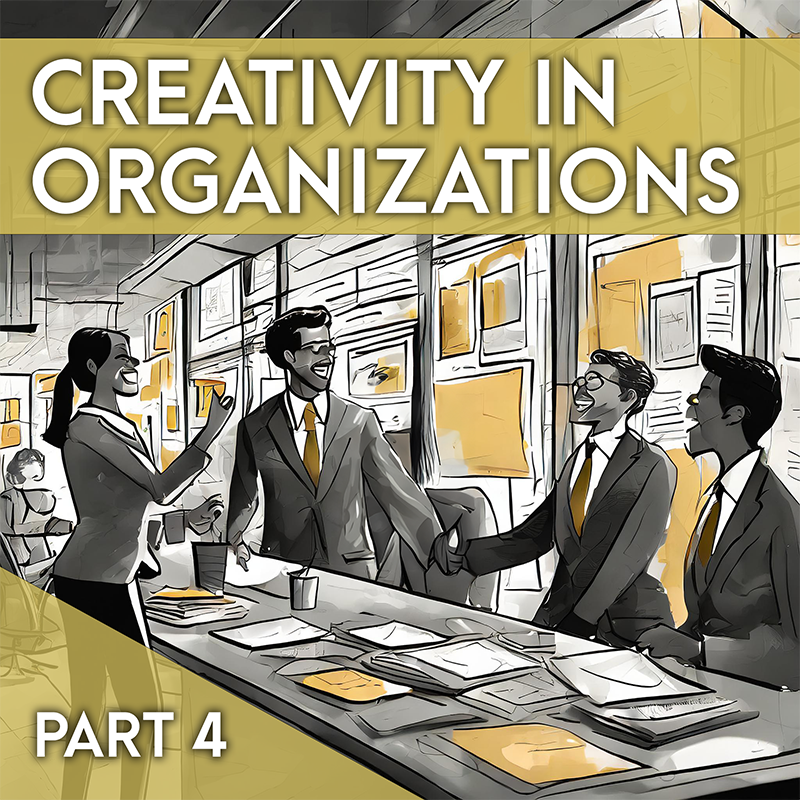
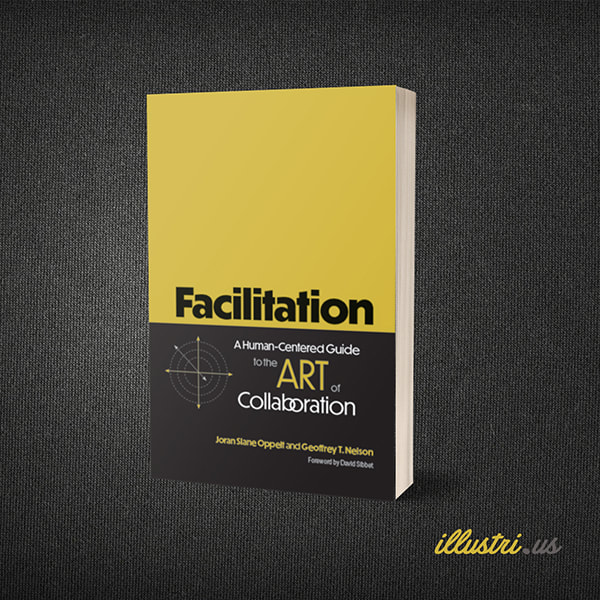
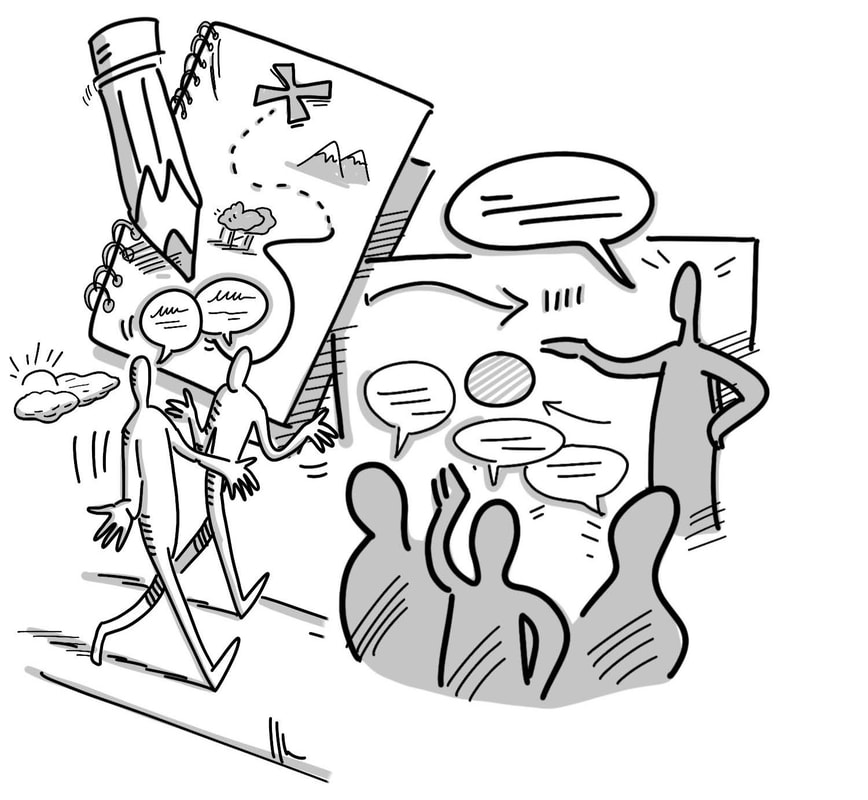


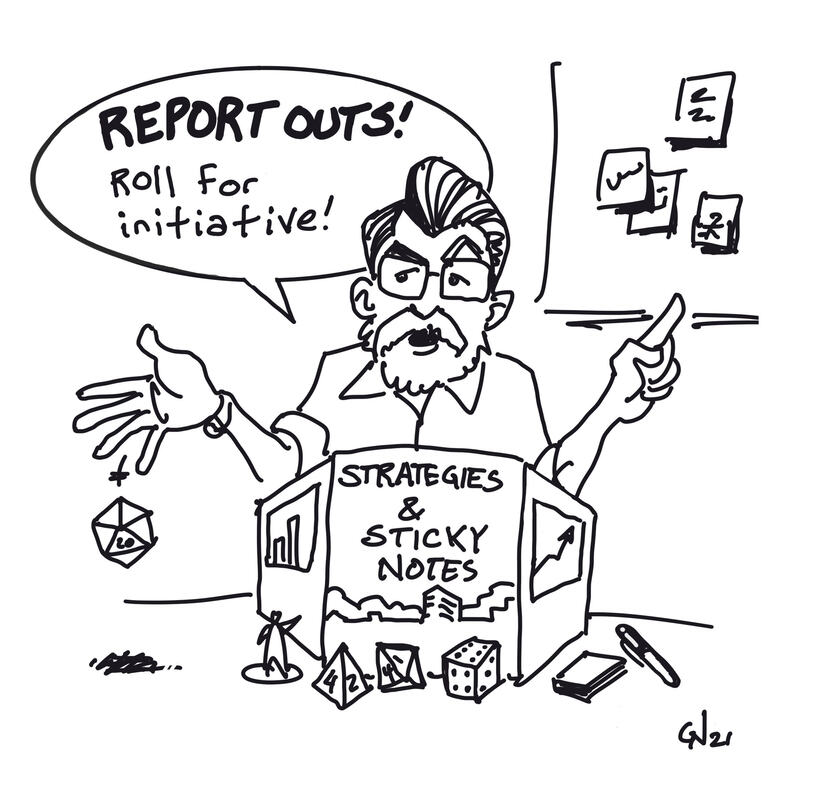

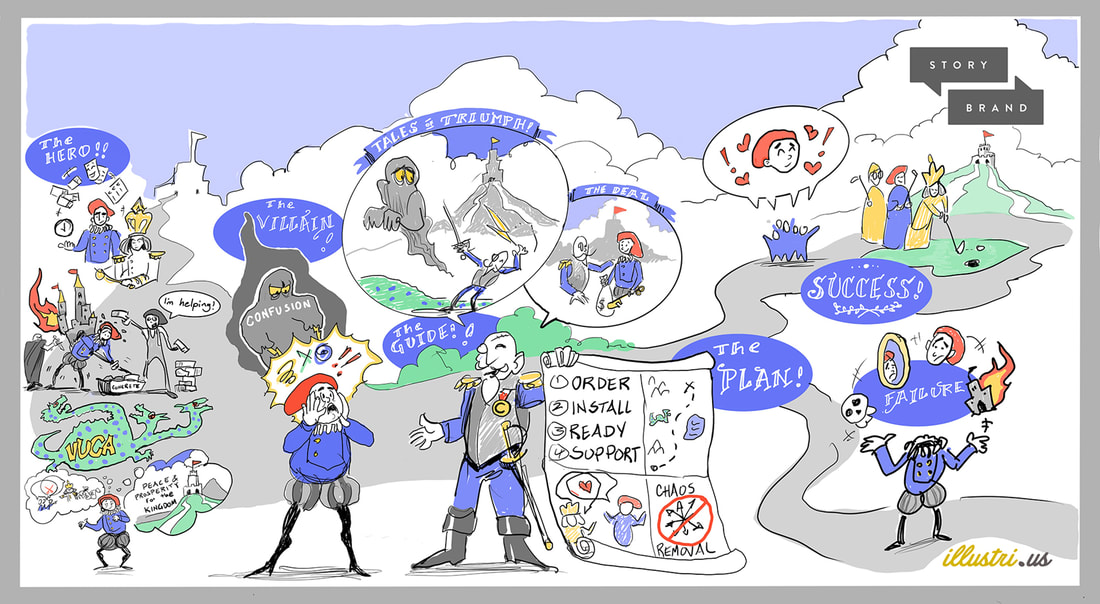
 RSS Feed
RSS Feed